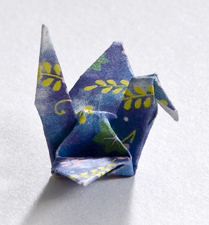Cellular Origin
Tumors arise from germ cells or less differentiated embryonal cells which migrate through the embryo.
These cells localize in the gonadal ridges but may migrate to other midline sites, such as the brain. This explains why cells of similar histologies to those in the pineal region may be found in the mediastinum and the retroperitoneum.
Tumor Histology
It is common for a tumor to have more than one different histological subtype, making it difficult to obtain accurate figures about the prevalence of certain tumor types.
Tumor type |
Macroscopic Properties |
Microscopic Properties |
Germinoma |
Poorly circumscribed
Cysts are uncommon
Gray/pink color
|
Large polygonal cells
Separated into lobules by blood vessels and connective trabeculae
Mitotic figures
|
Embryonal carcinoma |
Large, hemorrhagic, necrotic tumors
Grow in solid sheets or form large tubular or papillary structures
Stroma:
|
Malignant-appearing epithelial cells
Coarse, irregular nuclear membrane
Mitotic figures |
Choriocarcinoma |
Granular, hemorrhagic, necrotic tumors
May be circumscribed, but often invades adjacent brain:
|
2 cell types: 1. cytotrophoblastic cells:
2. syncytiotrophoblast cells
|
Teratomas |
Circumscribed
Round or lobulated
Solid and cystic areas
Benign |
Components of all 3 germ layers:
|
Pineoblastoma |
Pink/ white/ gray colour
Cysts of gelatinous material
Hemorrhagic and necrotic (occasionally)
Malignant
Infiltrative
|
Scant, ill-defined cytoplasm
Similar appearance to medulloblastoma cells
Homer-Wright rosettes
Highly cellular
Poorly differentiated |
Pineocytoma |
Circumscribed
Less cellular than pineoblastoma
Hemorrhagic
Necrotic |
Large cell nuclei
Often observe transition features between pineoblastoma and pineocytoma
Evidence for astrocytic and ganglion cell differentiation
Occasional Homer-Wright rosettes
Variable mitotic figures
May be poorly differentiated
|

